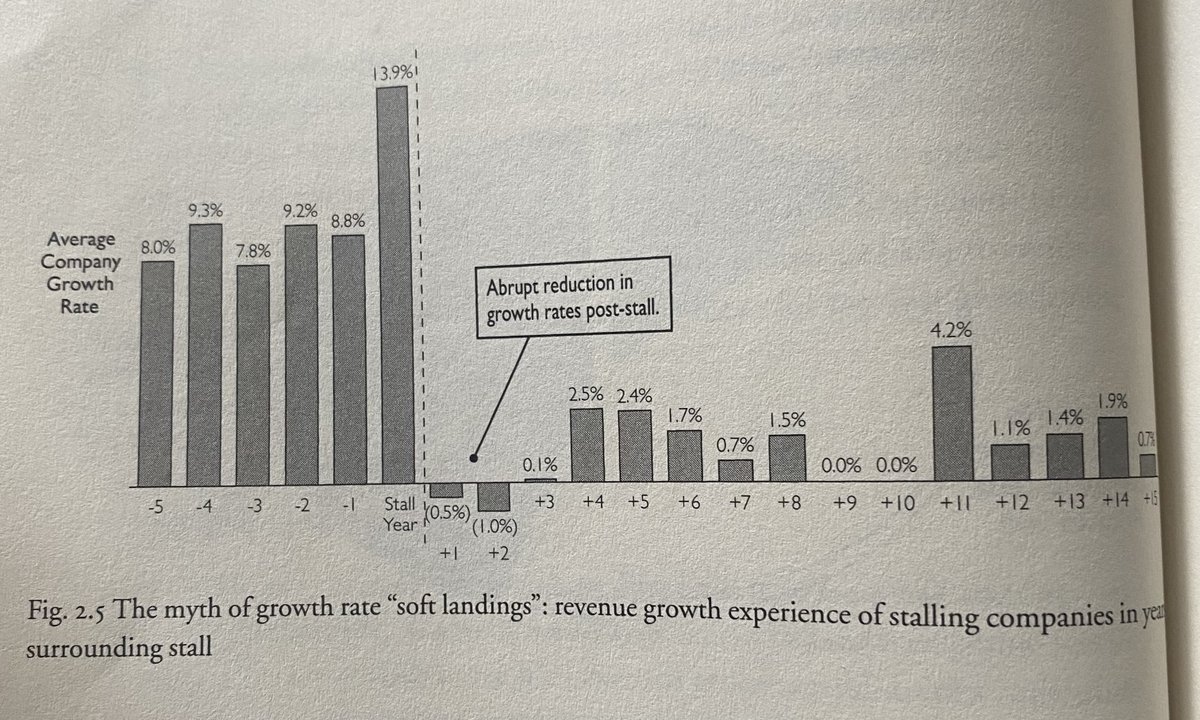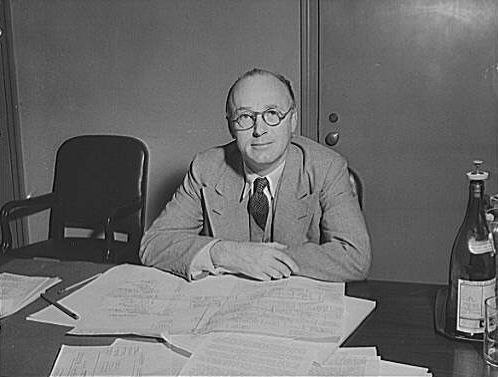
From our high horse, we (investors) assume we'll spot tell-tale signs of an impending revenue growth slow-down.
That's not true.
[Thread]: Why its nearly impossible to predict when a company's growth will stall, the myths of soft landings, and market cap consequences
That's not true.
[Thread]: Why its nearly impossible to predict when a company's growth will stall, the myths of soft landings, and market cap consequences

1/ The book "Stall Points" explains this concept perfectly.
We (investors) assume that we could spot the following to predict potential stall points:
- Revenue growth deceleration
- Gross margin compression
- Lack of business activity
None of these hold the answer.
We (investors) assume that we could spot the following to predict potential stall points:
- Revenue growth deceleration
- Gross margin compression
- Lack of business activity
None of these hold the answer.
2/ In fact, the reason why predicting stall points is impossible is because some co's do the EXACT OPPOSITE of what we think they should do.
Here's what I mean: Some businesses about to hit a stall point actually GROW revenues & margins!
Let's back this up with some data.
Here's what I mean: Some businesses about to hit a stall point actually GROW revenues & margins!
Let's back this up with some data.
3/ The book reveals what companies did right before the stall point:
- 40% Increased Margins
- 14% Maintained Margins
- 45% Accelerated Revenue growth
That's nearly half of the data showing the opposite of what we'd expect.
How is that possible?
- 40% Increased Margins
- 14% Maintained Margins
- 45% Accelerated Revenue growth
That's nearly half of the data showing the opposite of what we'd expect.
How is that possible?

4/ The "Oh S**t" Conundrum
The reason revenues tend to increase before the stall lies in the "Oh S**t" Conundrum. Management, realizing they might miss expectations, expands revenues by:
- M&A
- Channel stuffing
- Asset sales
All in hopes to keep that growth going. And yet..
The reason revenues tend to increase before the stall lies in the "Oh S**t" Conundrum. Management, realizing they might miss expectations, expands revenues by:
- M&A
- Channel stuffing
- Asset sales
All in hopes to keep that growth going. And yet..
5/ In other words, a rapid acceleration in revenue growth should prompt initial caution, not excitement.
What should investors do? Verify that revenue growth came from organic/planned business activity.
Watch out for past organic growers shifting to M&A-hungry expansion.
What should investors do? Verify that revenue growth came from organic/planned business activity.
Watch out for past organic growers shifting to M&A-hungry expansion.
6/ You know what else sucks? Stall points aren't gradual declines. They're cliff-falling collapses.
The book calls it "The Myth of Soft Landings"
Put simply, soft landings are rare and most companies exhibit a steep, sudden revenue growth drop-off.
Like Taleb's Turkey
The book calls it "The Myth of Soft Landings"
Put simply, soft landings are rare and most companies exhibit a steep, sudden revenue growth drop-off.
Like Taleb's Turkey

7/ The Consequences of Stall Points
- 42% of stocks declined more than two years after initial stall
- 51% lost more than 75% of market cap post-stall
- 40% lost between 50-70% of market cap post-stall
Stall points offer delayed, but certain penalties.
- 42% of stocks declined more than two years after initial stall
- 51% lost more than 75% of market cap post-stall
- 40% lost between 50-70% of market cap post-stall
Stall points offer delayed, but certain penalties.
8/ Some Lessons
What should you take from this thread? A few things:
- Pay attention to type of revenue growth (not all growth created equal)
- Assign low probability of success to turnaround stories (hard to regain growth)
- Cut losses quickly at first sign of stall point
What should you take from this thread? A few things:
- Pay attention to type of revenue growth (not all growth created equal)
- Assign low probability of success to turnaround stories (hard to regain growth)
- Cut losses quickly at first sign of stall point
9/ Conclusion
Go buy the book. Here's the link.
I'm having a hell of a good time reading, underlining, and re-reading parts I don't understand.
H/t @CliffordSosin for the recommendation.
amazon.com/Stall-Points-C…
Go buy the book. Here's the link.
I'm having a hell of a good time reading, underlining, and re-reading parts I don't understand.
H/t @CliffordSosin for the recommendation.
amazon.com/Stall-Points-C…
• • •
Missing some Tweet in this thread? You can try to
force a refresh






